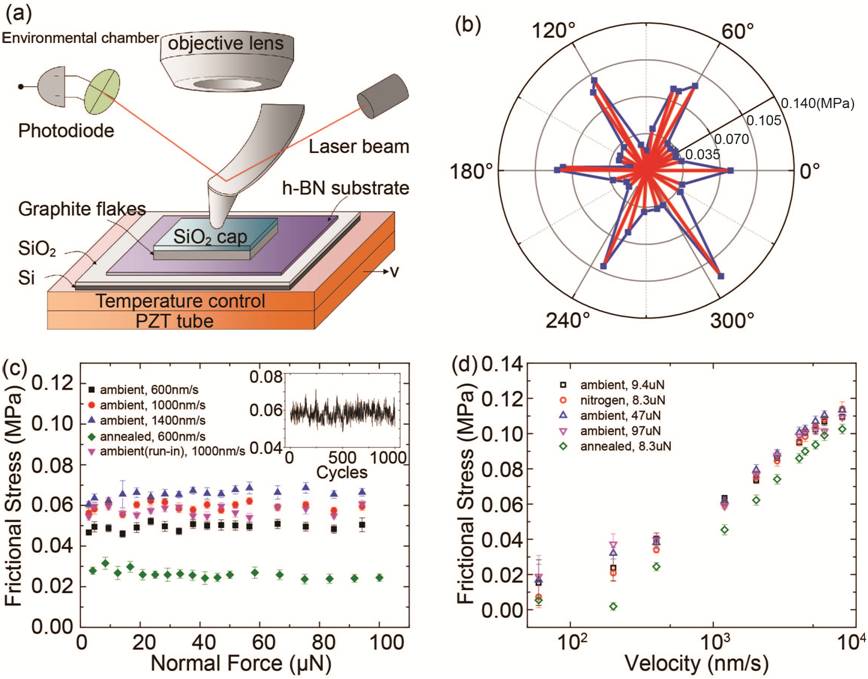On 30thJuly, Associate Professor Ming Ma and Professor Quanshui Zheng, both of whom are members of State Key Laboratory of Tribology (SKLT) Tsinghua University, published their research results, titled Robust microscale superlubricity in graphite/hexagonal boron nitride layered heterojunctions, on Nature Materials. The first author is Ph.D. student Yiming Song, the corresponding authors are Associate Prof. Ming Ma and Prof. Quanshui Zheng, andcollaborating authors include Dr. Davide Mandelli, Prof. Oded Hod and Prof. Michael Urbakh from School of Chemistry, Tel Aviv University.

Fig. 1 (a) Experimental setup. A graphite flake in micrometer is driven by an atomic force microscope tip, sliding against hexagonal boron nitride. (b) Angular dependence of friction between single crystal graphite/h-BN surfaces. (c) Dependence of friction on normal load at different sliding velocities and in various environments. (d) Dependence of friction on sliding velocity at different normal loads and in various environments.
Friction is one of the oldest, most fundamental and of critical importance phenomena. It has great significance in fields such as physics, engineering, chemistry, biology and so on. Nowadays, about 1/4 of the total energy is consumed by friction, and 80% of the mechanical devices’ failure are due to wear. Structural superlubricity, in which the lateral interactions between two incommensuratecontacting surfaces are effectively cancelled resulting in ultralow sliding friction, provides fundamental solution to this problem. Thus it has attracted great attentions worldwide. In this field, one of the hot topics is how to achieve robust superlubricity on large scale, e.g. micrometer to centimeter, eventually leading to practical applications in industry and daily life.
In this recently published work, researchers experimentally show that with single crystal graphite/h-BN friction pair on microscale, one can achieve robust superlubricity. This solves the longstanding problem, where an initially superlubric friction pair tends to transit into a high friction state asit is more energetically favorable. Importantly, such robust superlubric state is also stable under ambient condition, and shows wearless property within the normal load range tested. Using full atomic molecular dynamics simulations, the researchers reveal an interesting energy dissipation mechanism which is different from their homogeneous counterparts.
SKLT and Department of Mechanical Engineering Tsinghua Universityis the first affiliation of the paper published, with collaborating affiliations include Center for Nano and Micro Mechanics Tsinghua University, Tel Aviv University and Department of Engineering Mechanics Tsinghua University.
According to Web of Science - Journal Citation Reports, the impact factor of Nature Materials in 2017 is 39.235.
Link to the paper: https://www.nature.com/articles/s41563-018-0144-z


